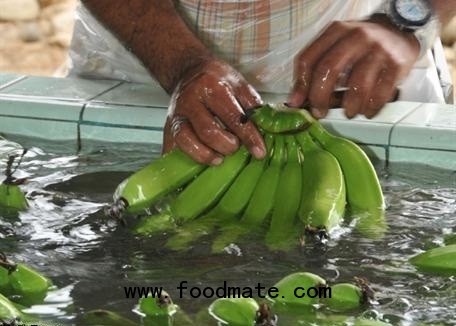
The Office of the Ombudsman urged the ministries of Health and Agriculture to conduct research on the environmental and physical effects that 17 chemicals used in banana plantations (including glyphosate) produce, according to resolution 010 of the entity.
The document was the result of research conducted since 2010, after Jorge Acosta Orellana submitted a complaint.
Acosta pointed out the alleged existence of abuse by employers, lack of state control and severe health problems in both the banana plantations and the nearby population caused by aerial and manual spraying.
The resolution of the Office of the Ombudsman, which includes the steps taken, states that "the reports from the Ministry of Health, Magap and the IESS are overwhelming. They put in evidence that respiratory and poisoning cases are accentuated in populations exposed to the use of chemicals in the crop dusting, whose danger and health risks are highly evident."
Therefore it was established among its recommendations and exhortations to carry out an investigation to determine the health risks of chemicals like siganex 600, volley, opal, tunic, still, tilt, mancozeb II, calixin, gramoxone and glyphosate.
The use of glyphosate raised questions from Ecuador to Colombia, because of the use of crop dusting to eradicate coca plantations in the border area.
Julio Escala, president of Simon Bolivar Agricultural Center, said that in the country this product is used to kill weeds and is applied by land. He said that workers should wear protective equipment during use.
Meanwhile, Pompilio Espinoza, representative of the banana produces from Cañar, said it is a priority to create an organism that conducts research on the effects of chemicals on humans and the environment. Currently when those chemicals are
applied the concentration is only regulated.
The resolution of theff Office of the Ombudsman also urges the Ministry of Environment to "require all banana companies to obtain their respective environmental license prior to the completion of activities where aerial spraying will be used as a method for pest control."
It is stressed that this kind of spraying should be done at least 200 meters from populated areas. In December 2011, the Directorate General of Civil Aviation banned aerial spraying within less than 200 meters.
It is also advised to the Ministry of Labour Relations to do research in banana plantations. It is encouraged to "devote the necessary staff to perform a registration campaign of the workers to social security system and verify aspects such as working hours, remuneration."





